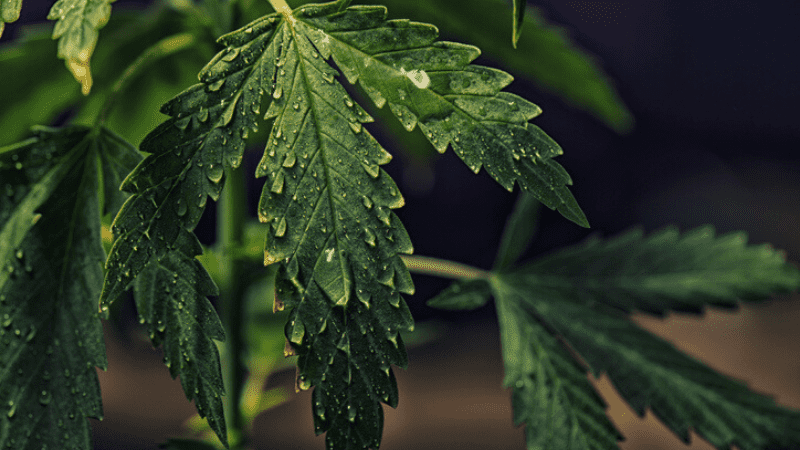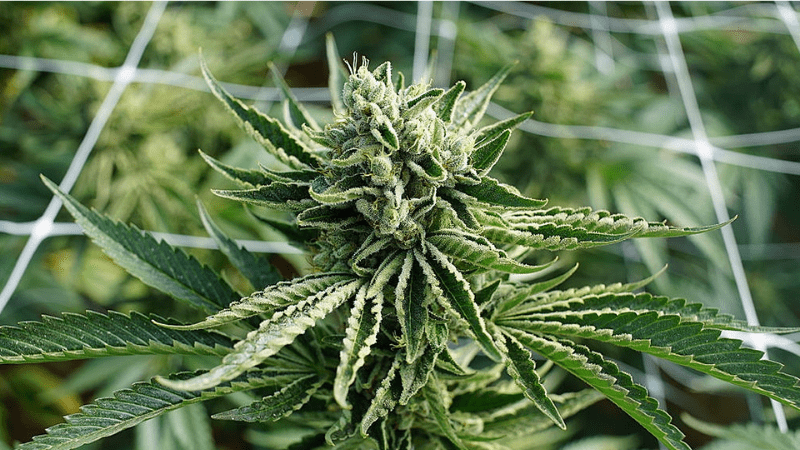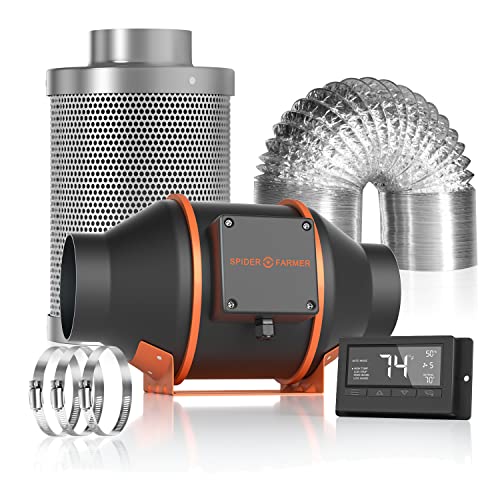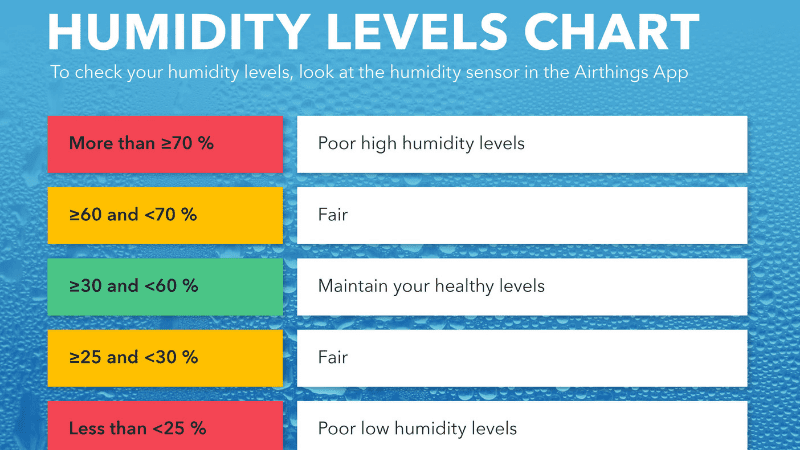When Should You Lower Humidity In Flowering? Expert’s Guideline
by Lee Safin
Like human beings, plants pass several life cycles in their whole lives, including germination, seedling, vegetative, and flowering. Each life stage doesn’t require the same level of humidity. Mostly, younger plants need more moisture than matured plants.
When should you lower humidity in flowering?
After passing 3-4 weeks, plants should be prepared for the flowering stages. You should lower the humidity level down to 55-60% during this period. Do it gradually.
Let them be adjustable with it. The flowering stage stays up to 11 weeks, but it will vary based on plant types.
Contents

When Should You Lower Humidity In Flowering?

As we mentioned earlier, the humidity for plants should not be the same in different life stages. Monitoring them is necessary. Control the moisture depending upon their life stage to ensure optimum growth and maximum yield.
So, you are here to know, when should you lower humidity in flowering?
Let’s see the ideal level of humidity in various stages and when you should lower it.
Seedlings/Clones

This is the initial stage of plants that comes from germination. During this period, they need the highest humidity level, and it should be around 70-75%.
Since their roots are not strong enough, they consume most water through their stems and foliages. That’s why keeping sufficient moisture around the atmosphere is essential.
This allows quick growth. Many gardeners use propagation trays or humidity domes to help plants intake a greater quantity of moisture.


Vegging Stage
During this stage, plants become a little bit longer, so they need slightly less water. During the vegging phase, the average humidity should be between 50-70%.
Plants can now intake a sufficient amount of water and nutrition through their roots. However, vegging cycle is the longest cycle for plant life. It may last up to 16 weeks.
Therefore, the initial part of the vegging cycle requires more water than later. Keeping the humidity level around 60-70% is a rule of thumb.
However, after completion of 3-4 weeks, prepare the plant for the flowering cycle. Reducing the humidity up to 55-60% is acceptable.
Flowering Stage

Growing plants in a grow tent will be different from the outside environment. Keeping 40-50% humidity level inside a grow tent for flowering plants is enough.
However, you must ensure the internal environment is comfortable for plants. It should be neither excessively cold nor hot.
But as we mentioned earlier, lower the humidity level gradually. Directly reducing the humidity from 60% to 40% doesn’t make sense.
Instead, you initially keep it around 50-55% and lower it slowly when you notice harvest. Try to decrease humidity by 5% every 2 or 3 weeks. This allows plants to get adjusted.
Harvesting Stage
During the harvesting stage, you merely need to reduce the humidity any further. Instead, keeping it balanced is important. The humidity level should be around 45-50%.
High humidity will invite molding issues while low humidity dries out your harvest overly. As a result, you may not get the right harvest level unless you ensure balanced humidity.
Let’s have a clear idea through a table:
| Plantlife stage | Humidity level | Expected duration |
|---|---|---|
| Seedlings/Clones | Around 70-75% | 2-3 weeks |
| Vegging Stage | Around 50-70% | 3-16 weeks |
| Flowering Stage | Around 40-50% | 8-11 weeks |
| Harvesting Stage | Around 45-50% | Until crops come out |
Hopefully, you got a clear view about “When should you lower humidity in flowering?” and other related things.
Why Is Humidity Important For Cannabis Plants?
The wrong level of humidity affects cannabis plants in several ways. To understand the concept in detail, let’s first know what is respiration procedure is for plants.
How Photosynthesis Process Works?

Plants live by consuming sugars. It is generated from the photosynthesis process inside the plant and transforms into energy. This energy helps them to grow faster and adequately.
Plants need a large amount of carbon dioxide from the surrounding environment to convert sugars into energy and oxygen.
The stomata of cannabis plants are located below the leaves. They have tiny pores. While working on the procedure, plants release some water into the air.
We begin to see relative humidity here. It says the water vapors the plant will lose to the atmosphere.
You can experience two situations:
High Relative Humidity


This condition pops up when a lot of moisture is available in the atmosphere. There is a marked reduction in the gradient of water concentration. It mainly occurs when an increased level of water vapor is around the air.
Since a sufficient amount of moisture is available in the air, plants don’t release much water. They remain in good shape.
Read More – How to Increase Humidity for Houseplants? Step By Step Guide
Low Relative Humidity


This condition pops up when a lower amount of moisture is available in the atmosphere. There is a marked increment in the gradient of water concentration. It mainly occurs for decreased levels of water vapor around the atmosphere.
Since an insufficient amount of moisture is available in the air, plants have to release much water. Due to this, a disruption occurs in the respiration process.
Read More – Best Portable AC For Grow Tent – Expert’s Review
Should Humidity Be Low Or High For Cannabis Plants?
The ideal humidity level of cannabis plants is around 40%-70%. Try to achieve a moderate manner for humidity to ensure optimum growth.
If you fail to ensure optimum humidity, your cannabis plants may have nutritional deficiencies and diseases.
In addition, extreme humidity will invite powdery mildew, which is known as a fungal disease.
What Humidity Should I Have In My Grow Tent?
Controlling both temperature and humidity is necessary when you grow cannabis inside your grow tent. You have already learned the requirement of various humidity levels throughout their life stage.
The humidity level may increase or decrease for various factors. Here are they:
Lighting


Continually keeping more lights switched on means more heat generation. The air becomes warmer. You achieve relative humidity.
On the contrary, dark grow tent doesn’t generate enough heat, and the atmosphere becomes cold. You achieve low humidity.
Read More – Best Led Light For Grow Tent – Expert’s Review
Aeration


Sufficient aeration is necessary for plants. The water vapors on the air are reduced due to raised air circulation. So, you achieve low relative humidity. This is particularly useful for mature cannabis plants as they don’t need higher humidity.
Read More – Best Exhaust Fan For Grow Tent – Expert’s Review
Watering Schedule
The more you water plants, the more they will consume through their roots. High water consumption leads to increased water loss.
Plants need a particular water level, and the remaining will be released in the air through their leaves. As a result, the humidity level around the atmosphere increases.
So, water plants constantly and regularly. Please don’t overdo it. The watering schedule should be reasonable enough to reach the perfect humidity level.
What Factors Affect Relative Humidity Control For Cannabis?
If you want to grow cannabis, take note of three essential factors for humidity control.
Region
The region directly or indirectly affects humidity levels. Cold areas are likely to have reduced moisture. Growing cannabis plants in such a situation require you to achieve the right level of humidity.
On the contrary, high temperatures are favorable to cannabis plants. They thrive best in such an environment since the environment has relatively higher humidity.
Genetics
The genetics of cannabis plants vary. Scientists have developed a greater number of varieties for many years.
Some cannabis varieties can easily adjust to cold weather where the humidity level is low.
In addition, some cannabis varieties can easily adjust to hot weather where the humidity level is very high.
Growing Stages
As we already mentioned, the requirement of humidity level varies for plants. This is also applicable for cannabis plants.
Throughout their lifecycle, they need different humidity levels. You need to control the humidity level for optimum growth. Otherwise, you will face the hassle of growing them.
What Humidity Levels Should You Maintain?

Plants thrive best when you ensure optimum humidity. According to most garden experts, try to maintain a humidity level of 45%-75% if you grow plants in a grow tent.
On the other hand, houseplants grow optimally when the humidity is around 40%-60% at home. But you already know mature plants need low humidity conditions while young plants need high humidity conditions.
But there are some exceptions too. For example, pineapples that grow best in a tropical climate can live up to 90% humidity. On the contrary, drought-resistant plants like cacti are used to live even in 10% humidity level.
Hence, we can say the living nature of plants determines their compatibility to live with various humidity levels. However, there is something called “ideal humidity.” You want to find perfect humidity for the particular level of plants and control it based on it.
Controlling humidity levels is essential to let your plants grow as much as possible. Choosing plants based on the area you live in is a rule of thumb. You don’t need to take care as much as you would do for an adverse environment.
Final Thought
So, are you still wondering when should you lower humidity in flowering? Certainly not. We have covered everything regarding this topic to clearly understand how humidity levels vary from one stage to another stage for plants.
Consider your plants’ life stage when caring for them. If you are a new gardener, check our recent articles to learn more about gardening.
Last update on 2023-01-28 / Affiliate links / Images from Amazon Product Advertising API
 |
 |
 |
 |

About Lee Safin
Lee Safin was born near Sacramento, California on a prune growing farm. His parents were immigrants from Russia who had fled the Bolshevik Revolution. They were determined to give their children a better life than they had known. Education was the key for Lee and his siblings, so they could make their own way in the world. Lee attended five universities, where he studied plant sciences and soil technologies. He also has many years of experience in the U.S. Department of Agriculture as a commercial fertilizer formulator.
Thoughts on "When Should You Lower Humidity In Flowering? Expert’s Guideline"
 |
 |
 |
 |
Get FREE Gardening Gifts now. Or latest free toolsets from our best collections.
Disable Ad block to get all the secrets. Once done, hit any button below
 |
 |
 |
 |